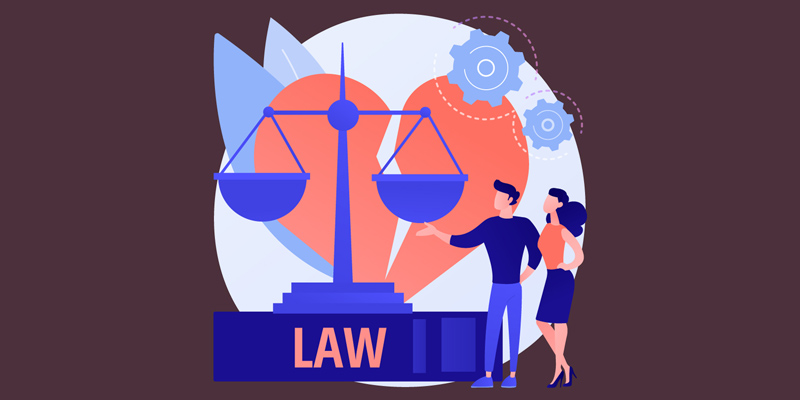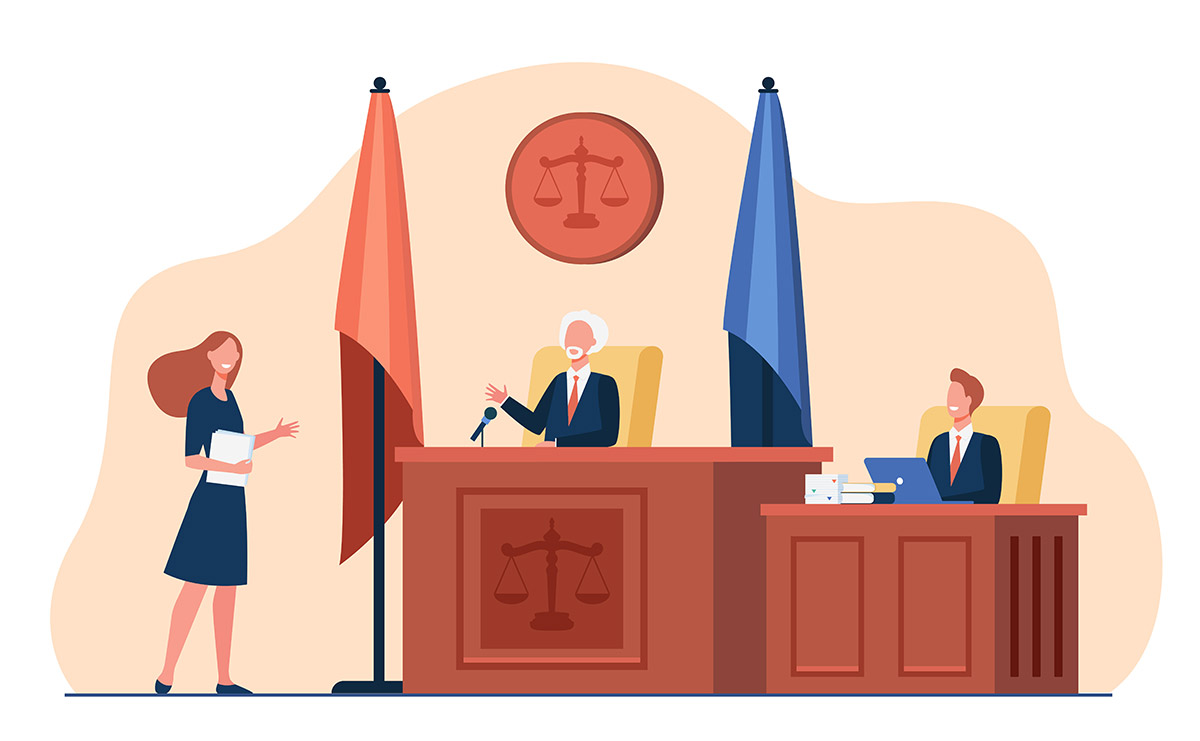Contents
Voir Dire in Jury Selection: Ensuring a Fair Trial
In any trial, ensuring that all parties have a fair and unbiased jury is crucial to justice. This is done through a process called voir dire, which means “to speak the truth” in French. During voir dire, lawyers and judges ask potential jurors questions to assess whether they can be impartial. It is a key part of selecting a jury that will approach the case without bias or preconceived notions. This step helps protect the fairness of the trial, upholding one of the most fundamental principles of justice in a democratic society. Attorneys use voir dire during jury selection to challenge jurors who may have preconceived notions or personal experiences that could influence their judgment in the case.
What is Voir Dire in Court?
The term that refers to the questioning of prospective jurors by attorneys is called “voir dire.” The legal term Voir dire is a preliminary examination of potential jurors conducted by attorneys and judges before the trial begins. The primary purpose of this process is to uncover any biases, preconceived notions, or connections that may influence a juror’s ability to render an impartial verdict based solely on the evidence presented in court.
During voir dire, attorneys from both sides ask prospective jurors questions designed to reveal these potential biases. These questions may delve into personal opinions, past experiences, or any potential relationship with the case, its participants, or the issues. Based on the responses, attorneys can challenge jurors who they believe may not be able to act impartially.
Why Is Voir Dire Important in Ensuring a Fair Trial?
The significance of legal term voir dire lies in its ability to safeguard the integrity of the trial process by:
Identifying Biases
In any legal case, jurors’ personal beliefs or experiences can affect their judgment. Voir dire allows attorneys to ask questions that reveal a juror’s potential bias. For example, in a personal injury case, a potential juror who works for an insurance company might hold beliefs that could influence their view of the plaintiff’s claims. Voir dire provides a platform to identify such biases and exclude individuals who may not be impartial.
Promoting Fairness
Voir dire plays a crucial role in promoting fairness, a fundamental aspect of the legal system. It ensures that all parties involved in a trial are given an equal opportunity to present their case. By excluding those with prejudices that could skew the trial’s outcome, voir dire helps to create a balanced and fair jury. A juror who enters the trial with preconceived opinions may prevent one party from receiving a fair judgment, making the role of voir dire in promoting fairness indispensable.
Preserving Public Confidence
Voir dire plays a significant role in preserving public confidence in the justice system. The public’s faith in the justice system depends on the perception that trials are conducted fairly and justly. Voir dire helps maintain this confidence by ensuring that juries are composed of neutral and objective individuals. This increases the likelihood that the verdict will be respected by both the parties involved and the general public, underscoring the importance of voir dire in preserving public confidence.

Types of Challenges During Voir Dire
During voir dire, attorneys can exclude jurors using two types of challenges:
For Cause Challenges
A challenge “for cause” occurs when an attorney believes that a potential juror cannot be impartial due to a specific bias, connection to the case, or personal experience. For example, a juror who knows one of the parties involved in the trial or has a strong bias on an issue central to the case may be dismissed. There is no limit to the number of for-cause challenges that can be made.
Peremptory Challenges
A peremptory challenge allows attorneys to exclude a potential juror without providing a reason. However, using peremptory challenges is limited, and attorneys must exercise them carefully. Importantly, peremptory challenges cannot exclude jurors based on race, gender, or other discriminatory factors, as established in the landmark U.S. Supreme Court case Batson v. Kentucky (1986).
Batson Challenges
If one party suspects the opposing side uses peremptory challenges to exclude jurors based on race, ethnicity, or gender, they can raise a Batson challenge. If the judge finds the challenge valid, the juror may remain on the panel, or the party may be required to offer a non-discriminatory reason for the juror’s exclusion.
Implied Bias Challenges
These challenges argue that a juror’s background or experiences inherently create a bias, even if the juror does not openly express it. For example, a juror with a close family member who is a police officer may be challenged in a criminal trial involving law enforcement.
Hardship Challenges
Jurors may be excused if serving on the jury would cause them significant personal hardship, such as financial strain, family responsibilities, or health issues. The juror themselves usually makes these challenges, but the court or attorneys can raise these.
These challenges ensure the selection of a fair and impartial jury by eliminating prospective jurors who cannot render an unbiased verdict.
Crafting Questions for Voir Dire
One of the most important parts of voir dire is asking the right questions to get honest and insightful responses from potential jurors. During the voir dire, jury selection process, attorneys ask potential jurors questions to assess their suitability and ensure they can be impartial throughout the trial. Attorneys have to strike a balance—being direct enough to reveal any biases, but not so leading that the jurors feel pushed toward a certain response. These questions can touch on a variety of topics, such as:
- Personal relationships with anyone involved in the case
- Experiences related to the subject matter of the case (e.g., previous involvement in similar legal disputes)
- Personal beliefs that may affect the ability to remain impartial (e.g., views on law enforcement, corporate liability, or medical malpractice)
- Media exposure or public statements about issues relevant to the trial
Attorneys must also be mindful of potential jurors who may be trying to hide biases or may be unaware of their own prejudices. The key outcome of skilled questioning during voir dire is to assess whether a juror is likely to be fair and impartial.
The Role of the Judge in Voir Dire
The judge plays an important role in overseeing the voir dire process. While attorneys from both sides take the lead in questioning, the judge ensures that the questioning remains relevant and respectful. In some cases, judges may ask questions directly, particularly if the court has established rules about the scope of questions attorneys can ask. Additionally, judges are responsible for ruling on challenges for cause and ensuring that peremptory challenges are not used in a discriminatory manner.
Essential Steps for Conducting an Effective Jury Selection
Jury selection is crucial to the outcome of any trial. The jurors chosen will ultimately decide the case, so selecting the right group is essential. To do it right, attorneys need a solid plan, sharp observation skills, and a deep understanding of people. The goal is to spot potential biases and ensure the jury is fair and unbiased. Here is a look at the key steps involved in making sure jury selection is as effective as possible:
Understand the Case and Key Issues
Thorough preparation is key before entering the jury selection process. Lawyers should fully grasp the case’s key issues, legal theories, and the specific facts they plan to present. Knowing which points may elicit strong emotional responses or biases from potential jurors will guide questions during voir dire.
Develop a Clear Jury Profile
Attorneys should identify the characteristics of an ideal juror based on the case. This includes factors like age, occupation, experiences, and potential biases. For example, depending on the side, jurors with healthcare backgrounds may be favorable or unfavorable in a personal injury case.
Ask Open-Ended Questions During Voir Dire
During voir dire, ask open-ended questions to encourage potential jurors to reveal their true feelings, biases, or life experiences that may affect their impartiality. For example, questions like “What are your thoughts on large damage awards?” or “Have you ever had a negative experience with a lawyer?” allow jurors to explain their perspectives.
Watch for Nonverbal Cues
Body language, facial expressions, and eye contact can provide crucial insights into a juror’s subconscious feelings. Jurors may verbally state they can be impartial, but their nonverbal cues could reveal hesitation or bias.
Evaluate Group Dynamics
Consider how jurors interact with each other during the selection process. Strong-willed individuals can sometimes dominate deliberations, so it is crucial to assess their potential influence on the rest of the jury.
Look for Hidden Biases
Some jurors may not openly express bias but might hold subconscious beliefs that can affect the case. Asking indirect questions about their views on authority, corporate responsibility, or justice can help uncover deeper biases.
Consider Demographic Factors
Demographics such as age, gender, socioeconomic status, and education level can sometimes influence a juror’s perspective. However, it is crucial to avoid assumptions based solely on demographics and use them with other information gathered during voir dire.
Balance the Jury
An ideal jury has a balance of personalities, viewpoints, and experiences that will encourage healthy deliberation. Avoid juries who are likely to become polarized or have members who dominate or stifle discussion.
Prepare for Jury Bias During Trial
Even after jury selection, monitoring the jury’s reactions throughout the trial is essential. If bias or misconduct arises, you may need to address it through legal motions, such as requesting a mistrial or jury instruction from the judge.
Effective jury selection is both an art and a science, requiring a blend of legal strategy, psychological insight, and careful observation. By following these steps, attorneys can improve their chances of selecting a fair and impartial jury for their case.
Impact of Technology on Voir Dire
The impact of technology on voir dire has reshaped the jury selection process in several ways. Vital technological advances have influenced how lawyers and courts approach the task of identifying impartial jurors:
Social Media and Online Research: Attorneys now use social media platforms to research potential jurors, gathering information about their biases, opinions, and personal history that might influence their decisions in a trial. This can uncover insights that were previously inaccessible during traditional voir dire questioning.
Data Analytics and AI: Legal teams now harness the power of data-driven analytics and AI tools to predict juror behavior based on demographic information and past case outcomes. These tools can help identify patterns in how certain groups may lean in specific case types, empowering more strategic decision-making in jury selection.
Virtual Voir Dire: In the post-pandemic era, virtual voir dire has become more common, allowing courts to conduct juror interviews remotely. This can increase participation, reduce costs, and offer convenience but may introduce new challenges, such as assessing juror demeanor through a screen.
Digital Questionnaires: The use of electronic questionnaires distributed before voir dire has streamlined the process, making it more efficient and less intimidating for jurors. This enhances transparency and ensures more thoughtful answers, providing ease and convenience in the process.
Challenges to Privacy and Bias: With the rise of social media and online juror research, privacy and ethical concerns have emerged. Some jurors may feel uncomfortable or violated by the knowledge that their online activities are being scrutinized. There is also the potential for inherent biases to influence online data interpretation.
These technological advancements have increased the ability of legal professionals to conduct a more thorough jury selection process but also raise questions about fairness, privacy, and potential biases.
Ethical Boundaries in Voir Dire
In voir dire, the process of jury selection, and ethical boundaries are crucial to ensure fairness and uphold the integrity of the judicial system. Here are the key ethical considerations that legal professionals must observe during voir dire:
Avoiding Prejudicial Influence
Attorneys must not ask questions designed to inflame prejudices or biases within potential jurors. The goal is to uncover biases that may affect a juror’s impartiality, not to implant new ones. For instance, questions that invoke racial, ethnic, or religious stereotypes are unethical.
Respecting Juror Privacy
While probing jurors’ backgrounds and opinions is essential, attorneys must respect their privacy. Specific personal topics, such as intensely private matters unrelated to the case, should be avoided unless necessary. Lawyers must walk a fine line between thorough questioning and intrusiveness.
Misrepresentation and Misleading Questions
It is unethical for an attorney to mislead jurors during the voir dire process by misstating facts, the law, or the nature of the case. The process should foster honest and clear communication, ensuring that jurors are accurately informed about the case’s details.
Prohibited Tactics
Lawyers cannot use voir dire to begin arguing the case or introduce evidence indirectly. This tactic, known as “pre-trying” the case, is considered unethical because it violates the principle that the trial should only begin after jury selection is complete.
Avoiding Exclusion Based on Discriminatory Grounds
Excluding potential jurors based on race, gender, or ethnicity violates ethical rules and constitutional principles. The U.S. Supreme Court has ruled that peremptory challenges based on discriminatory reasons are unconstitutional (as established in Batson v. Kentucky).
Disclaimer: The content provided on this blog is for informational purposes only and does not constitute legal, financial, or professional advice.







